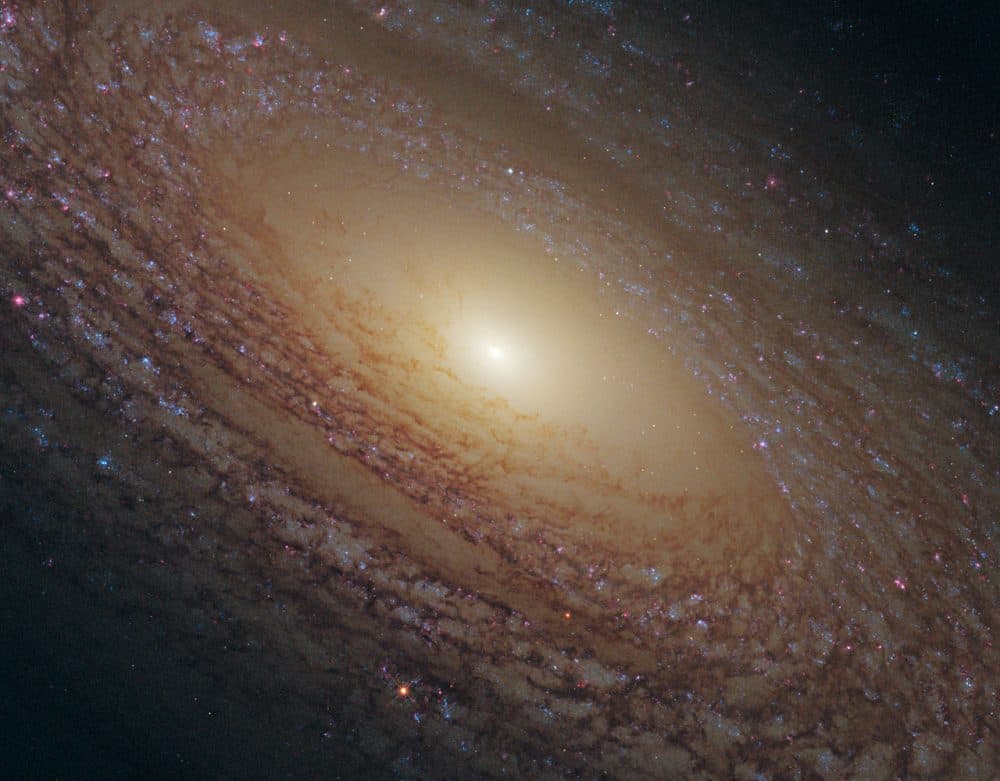The Cosmos with NGC 2841
Star formation is one of the most important processes in shaping the Universe; it plays a pivotal role in the evolution of galaxies and it is also in the earliest stages of star formation that planetary systems first appear.
Yet there is still much that astronomers don’t understand, such as how do the properties of stellar nurseries vary according to the composition and density of gas present, and what triggers star formation in the first place? The driving force behind star formation is particularly unclear for a type of galaxy called a flocculent spiral, such as NGC 2841 shown here, which features short spiral arms rather than prominent and well-defined galactic limbs.
NGC 2841 is an inclined unbarred spiral galaxy exhibiting a prominent inner ring structure in the constellation Ursa Major, it was discovered on 9 March 1788 by William Herschel. Initially thought to be about 30 million light years distant, a 2001 Hubble Space Telescope survey of the galaxy’s Cepheid variables determined that it was approximately 14.1 megaparsecs or 46 million light years distant. NGC 2841 is a giant spiral galaxy with properties similar to those of the Andromeda Galaxy. It is a prototypical flocculent spiral galaxy, a type of spiral galaxy whose arms are patchy and discontinuous.
